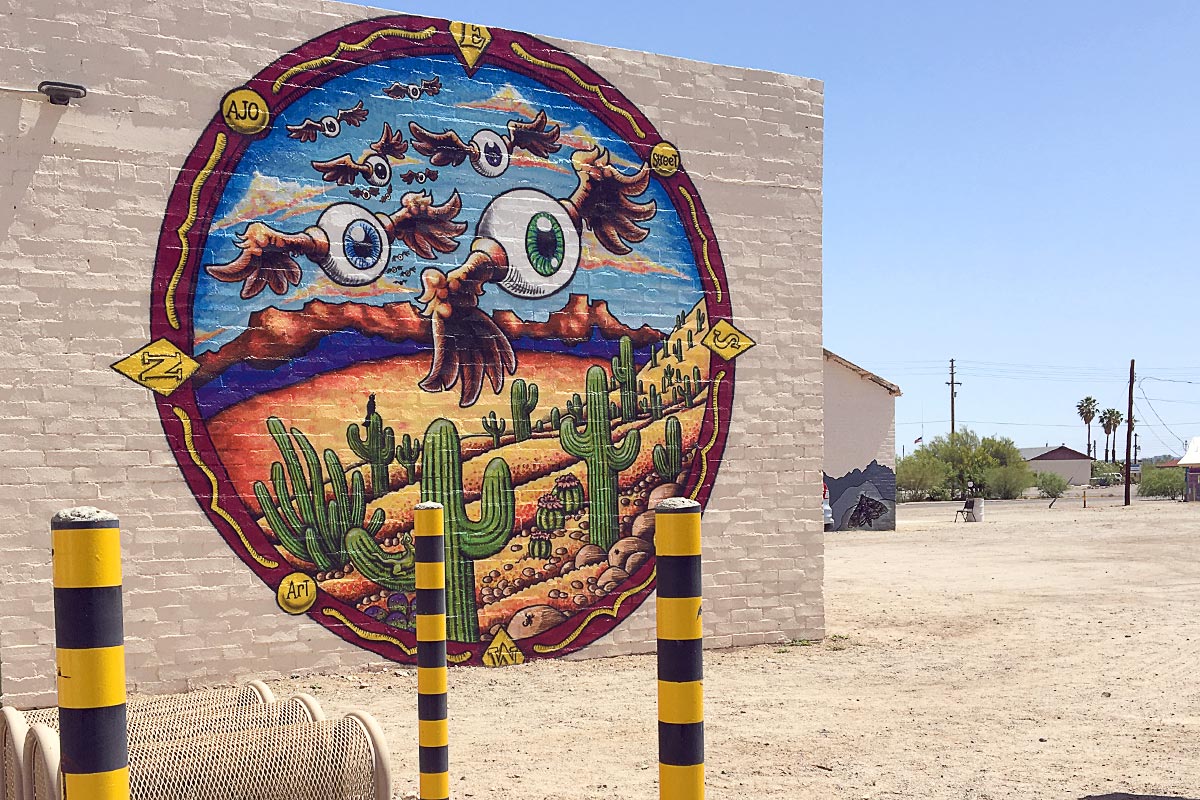
White sheets blowing in the wind
A satellite dish pointed straight up at the heavens
Isis!
—Cracker
Imagine this: you’ve long since exited the interstate and find yourself on a narrow two-lane highway through the cactus-scattered southern Arizona landscape. In the far distance, low and wide purplish-grey mountains. On either side of you, vast flat fields of yellow scrub brush and the occasional saguaro cactus. Everything looks scorched; at least it’s cooler in the car.
Suddenly you enter a small town and everything explodes with color: every building is covered with murals in a motley rainbow of vibrant hues. Peyote women with hair of roses here; Robert Crumb-esque flying eyeballs hovering over vivid green cacti there. There are dozens, and each is in a distinct style: minimalistic, or traditional, or cartoonish, or full-blown psychedelia.
That’s what driving into Ajo, Arizona is like.
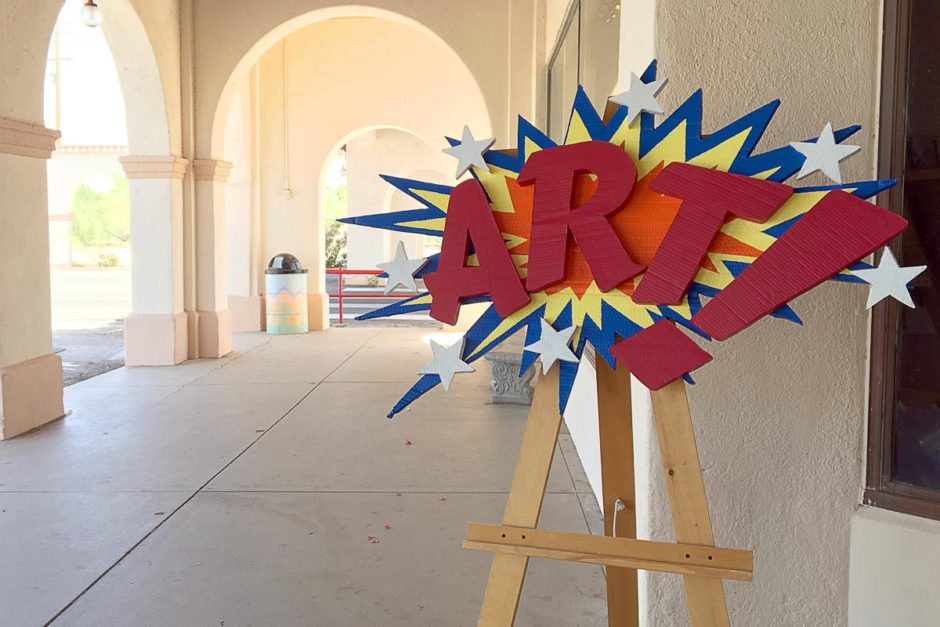
But imagine that scene again: driving through the flat and largely featureless desert. And this time, the unexpected thing you come across is something altogether different: a jumble of large astronomical observatories situated on several chilly mountaintops up in the clouds called Kitt Peak.
That’s how the drive on Day 9 of the road trip went for Masayo and I today. Arizona has been a quirky land of oddness and charm.
The art of Ajo
First thing’s first: “Ajo” is a town just down the road from the town of Why. Why was originally a dot on the map informally called Y because it was the juncture of two roads, but when it became a fully-fledged town, Arizonan law stated that town names must have at least three letters so it became Why. And, Ajo is pronounced “ah ho”, which in Japanese (アホ, “aho”) means stupid.
So we couldn’t stop giggling at the names of the towns around us even before we arrived.
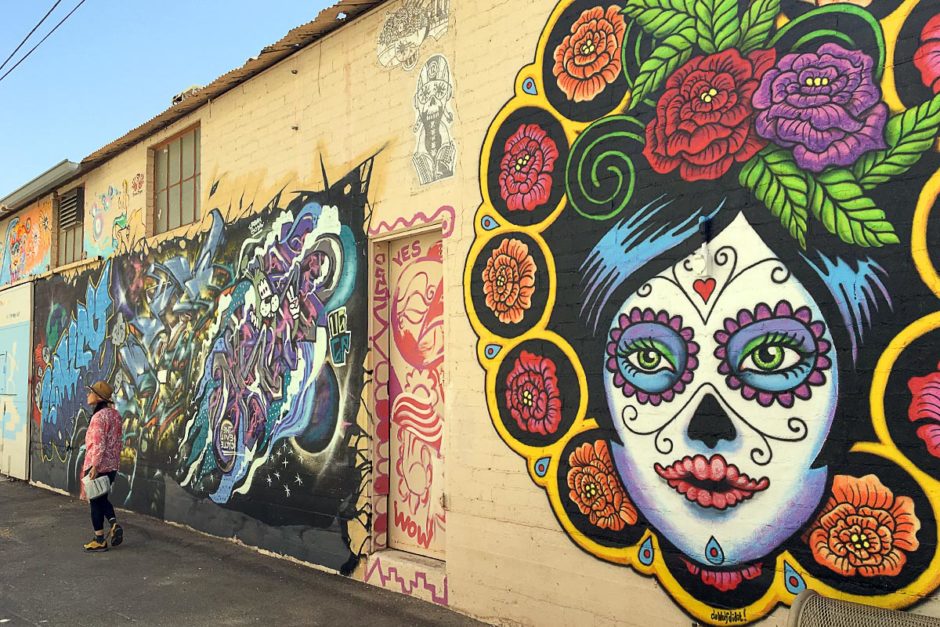
There didn’t seem to be much going on in Why (I did stop and buy gas and ice at a store called, inevitably, Why Not) but Ajo thrives.
We parked in what looked like the downtown area of Ajo, a three-sided row of shops, restaurants, and practical offices like the USPS and a visitor center designed with white archways and a decided Southwestern feel. In the middle was a vast green lawn with park benches, desert palm trees, and concrete paths allowing the townspeople to zigzag between the buildings purposefully.
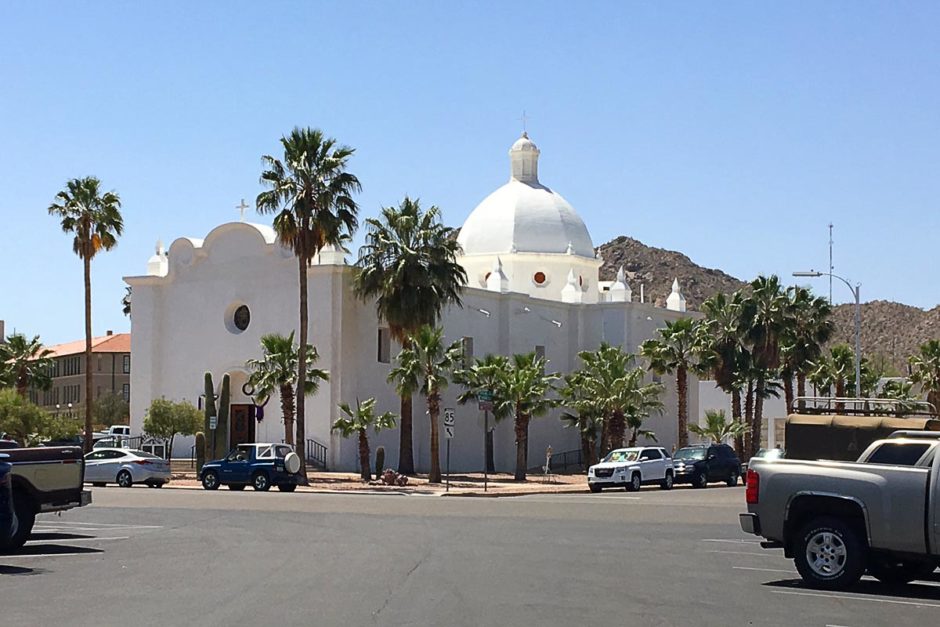
Church in downtown Ajo, in the town’s distinctive bright white style.
But it was Artists’ Alley that drew us: a block over from the white arches was the best collection of murals, obvious expressions of a restless and boundless creativity on the part of some of Ajo’s residents. With varying levels of intricacy and with a variety of subject matter – many inspired by the enigmatic world of the desert cosmos, some political or social in nature, others reflections of people and local life – you stroll down the short street and with each new piece see a new side of the town.
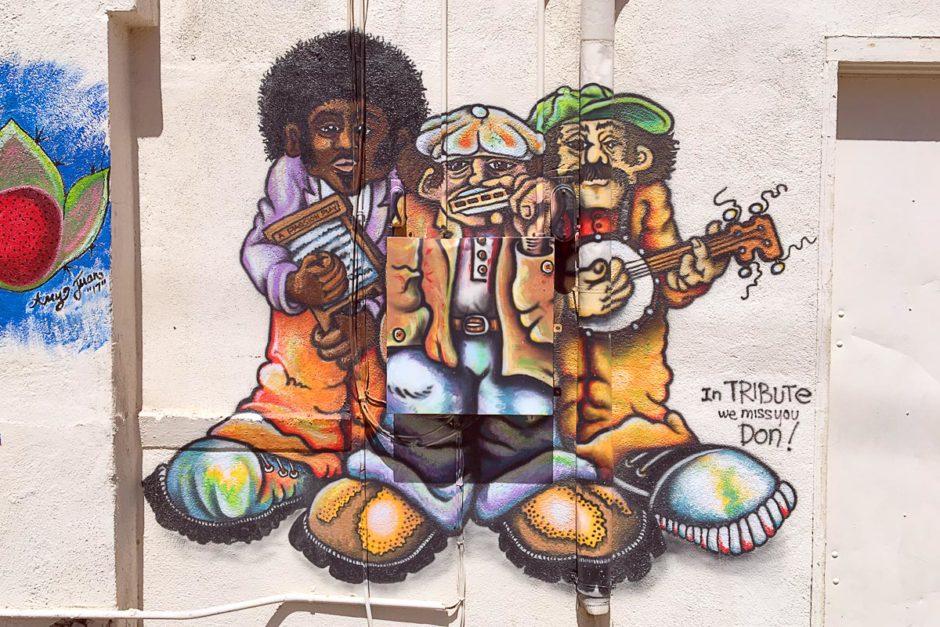
After a tasty chorizo burger and hand-cut fries at a restaurant called One Hundred Estrella we stopped at a thrift store where I bought a new trip t-shirt: a cartoon cow smiling in a show-biz kind of way and saying MAKE GOOD CHOICES. For $2, why not indeed.
Observatories on the reservation
Leaving the art-oasis of Ajo we headed down obscure Highway 86 through an Indian reservation, the Tohono O’odham Nation. It’s the second-largest land holding by Native Americans in the United States and occupies a large swath of south-central Arizona.
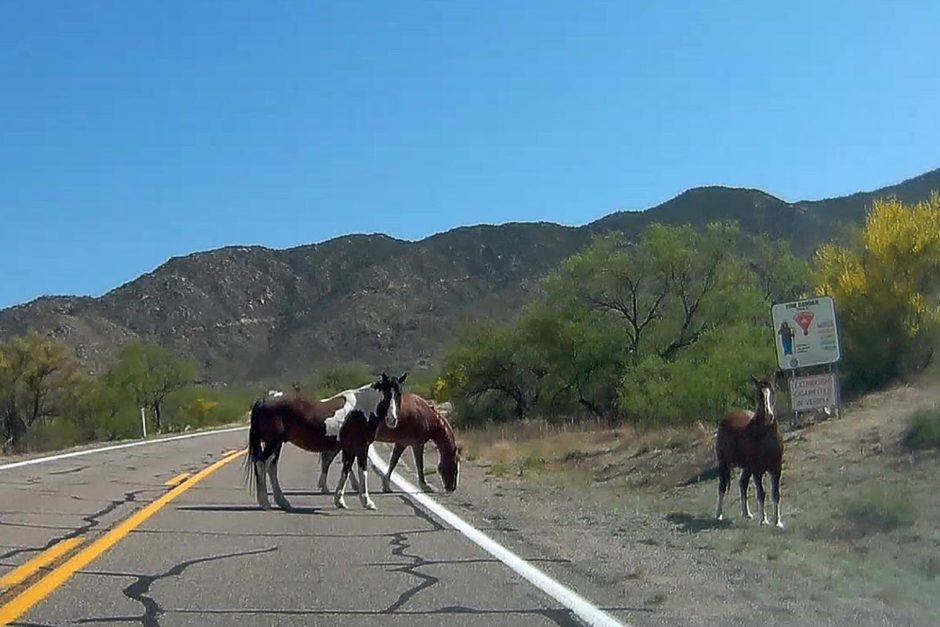
On the road to Kitt Peak.
And in the middle of it all, with its gentle rolling hills and sun-cooked cacti, a road goes off Highway 86 and up into the Baboquivari Mountains which contain Kitt Peak National Observatory. Demonstrably unlike anything in the surrounding landscape, Kitt Peak is the largest collection of observatories in the world: no fewer than twenty-six are scattered around the high mountaintops.
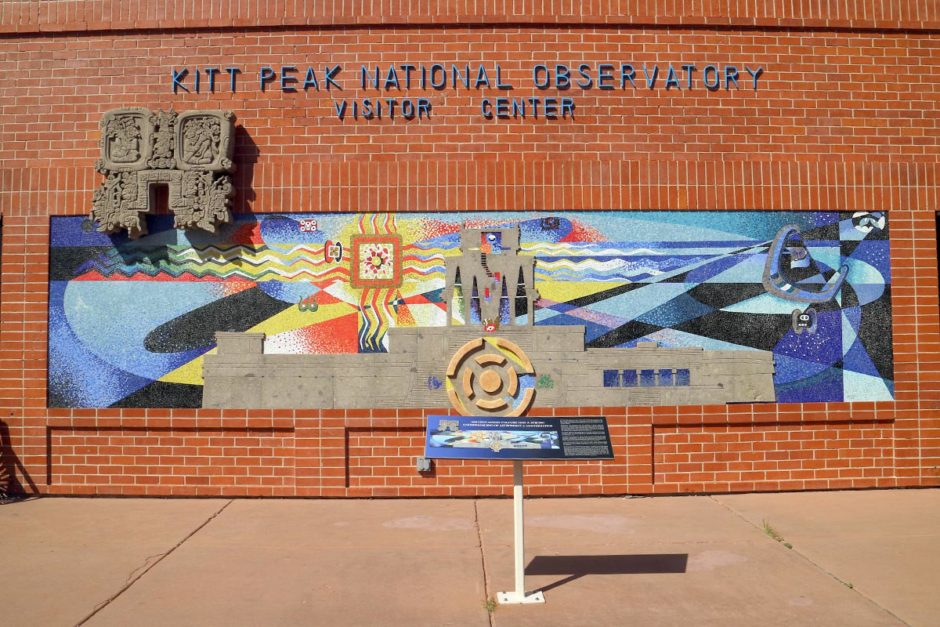
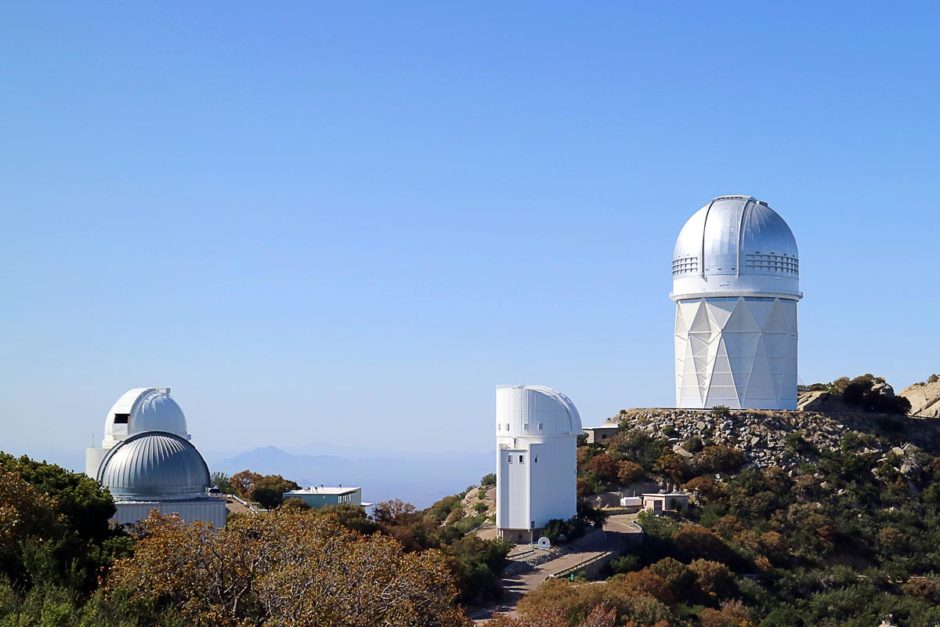
Visitors are allowed during daylight hours, but are advised to keep their voices down since many of the scientists live in on-site dorms and sleep during the day. The visitor center is fantastic, offering interactive exhibits to help people understand how telescopes work, why Kitt Peak has been important in astronomy, and just plain fun things, like a lightning globe you can touch or a TV that shows you a live infrared version of yourself.
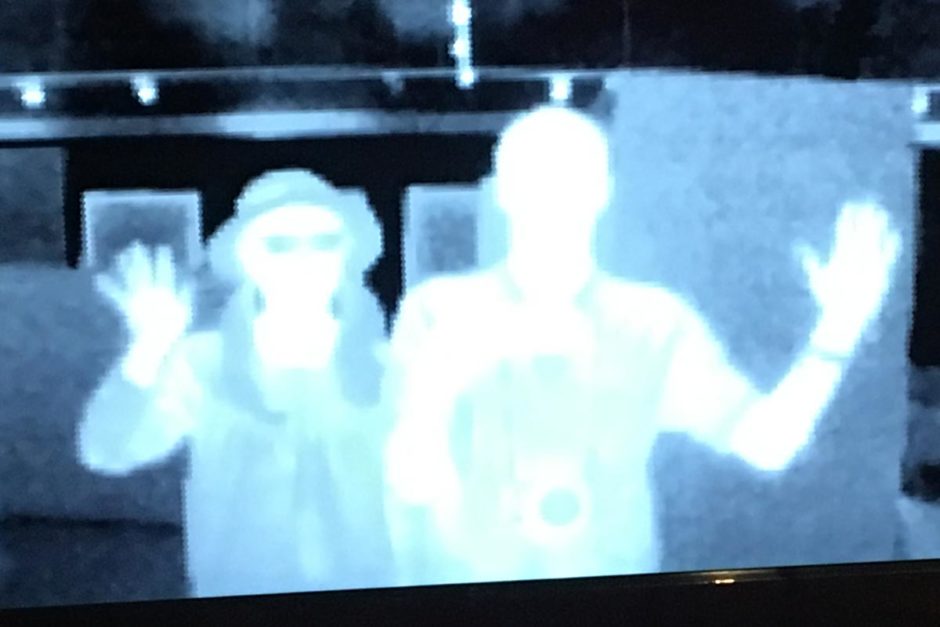
Masayo and I, infrared version.
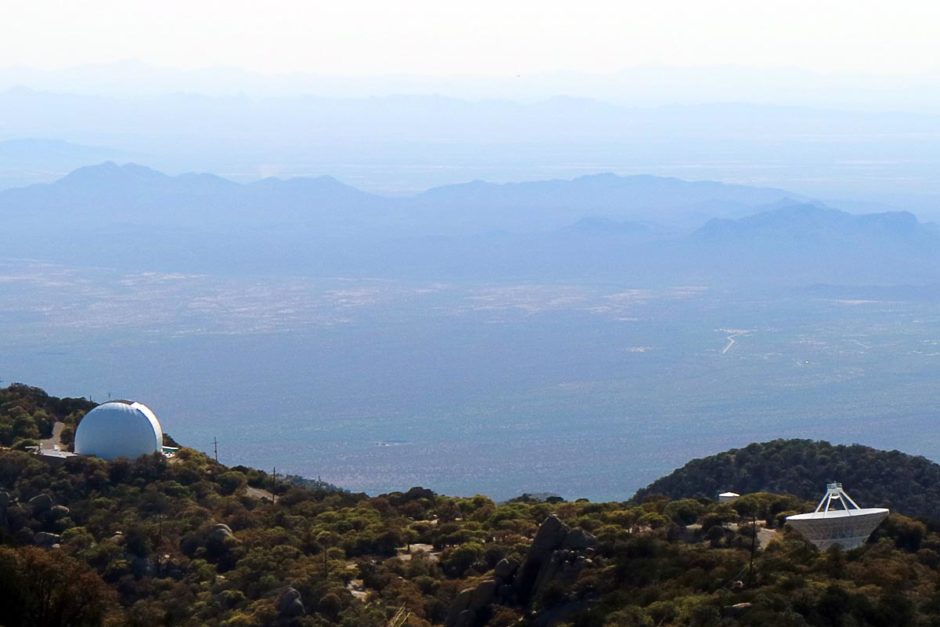
Unfortunately it was getting near closing time, and while we bought the self-guide brochure for 50¢ there was no time to hike up to the biggest telescope and see the exhibits inside. All we had time for was a stroll around the hilly paved roads between the nearer ones, snapping photos of the large white domes and gawking at the arid Sonoran Desert far, far below us. It was about 15º cooler than the base of the mountains; you may need a jacket when the chilly and unimpeded wind blows over and between the great telescopes.
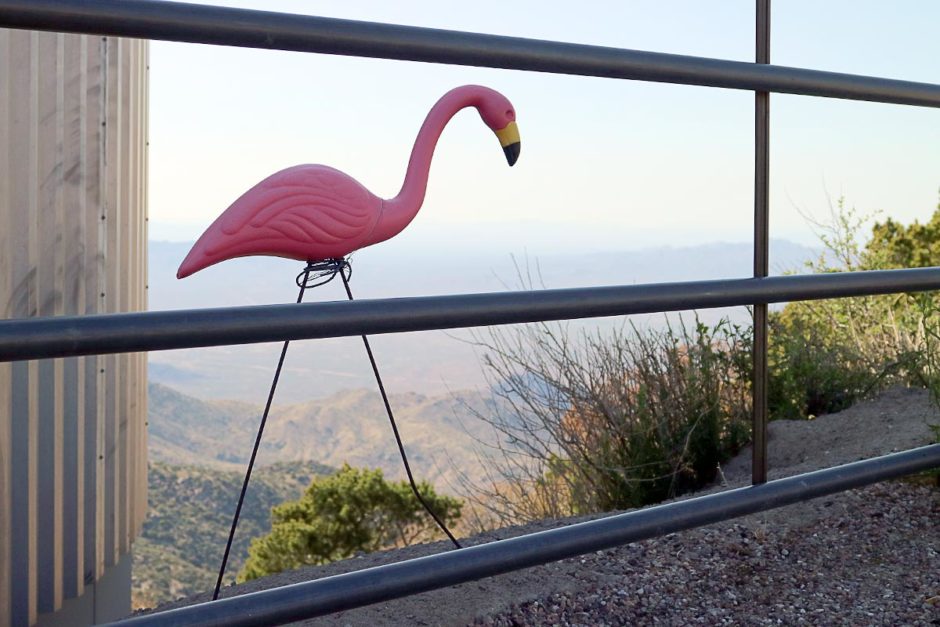
Some of the scientists may be homesick for more tropical climes.
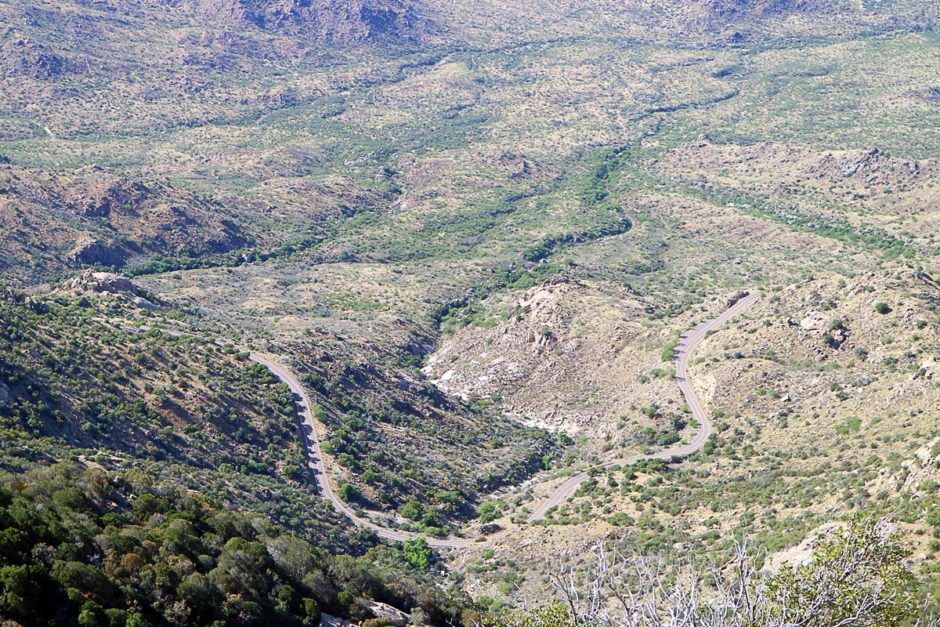
Looking down at the dramatic road to Kitt Peak.
From there it was back down the amazing and steep mountain road with its maddeningly distracting views (pull off to the side if you want to see them, don’t do it while trying to drive!) and off to Tucson for the night. California may have thrown a non-stop series of landscapes at us, but Arizona has been showing us a more subtle and in some ways wider range of experiences. Psychedelic desert art and a wind-blown scientific enclave – never would have seen that coming if we hadn’t ventured down the obscure back roads of Arizona ourselves.
Good times overcome bad blood sugars
This morning I woke up with the highest reading of the trip so far: 332, a result of overcorrecting a low at our campsite in Organ Pipe Cactus National Monument last night.
By lunchtime in Ajo I had that down to 71, on the very low side of acceptable. After leaving Ajo and seeing Kitt Peak National Observatory, I was 229 before dinner in Tucson and presumably had been high all afternoon.
So it was a roller coaster day for blood sugars, but while normally that would annoy and distract me, today it mattered far less. The diversions of the adventure, the drive, and the promise of the unexpected around each curve put me in a far better mood than I would otherwise have been.
Travel is exciting enough to overcome “diabetic shame”. Of course I’d have preferred my BGs to be all spectacular, but if they aren’t going to be I’m glad I can at least be on the road and feel my spirit uplifted by all the rich life around me.
Thanks for reading. Suggested:
- Share:
- Read: Day 11: Why you should get the hell off the interstate
- Join: Free email newsletter (info and early video access)
- Support: Patreon (much earlier video access and other perks)

Support independent travel content
You can support my work via Patreon. Get early links to new videos, shout-outs in my videos, and other perks for as little as $1/month.
Your support helps me make more videos and bring you travels from interesting and lesser-known places. Join us! See details, perks, and support tiers at patreon.com/t1dwanderer. Thanks!
Want more? Get the free newsletter
Join us! Sign up to my email newsletter to receive updates, behind-the-scenes info,
and early links to my new YouTube videos before everyone else
